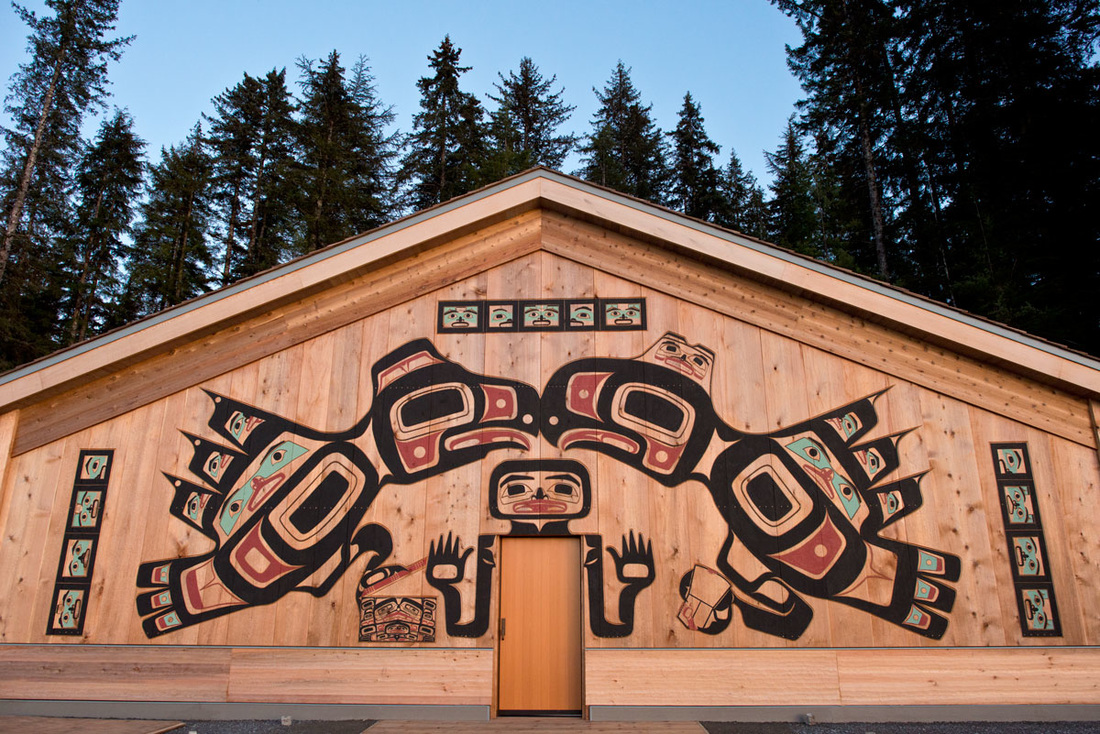At mid-night on August 25, 2016, the National Geographic Sea Lion entered Glacier Bay and began her journey 65 miles north to the face of Margerie Glacier. Our officers piloted our ship through the night and into the dawn light as we approached the end of Tarr Inlet and the face of several glaciers. The sunrise light decorated the mountain tops behind Margerie Glacier and slowly crept down the mountains bringing a soft filtered sunrise to the upper region of Glacier Bay National Park, our destination.
Our morning was spent exploring Tarr Inlet. We moved south through Russel Cut finding a lone wolf walking, exploring and hunting in an alluvial fan. On approach to Gloomy Knob we found bald eagles and mountain goats relaxing in their mutual homes. Rounding the corner of Gloomy Knob a mother brown bear and three cubs were spotted near a salmon stream. They were busy eating greens on the slopes near the stream. Across the way another mother and three cubs were spotted along with more than ten mountain goats high along the ridge line, all indicators of the healthy environment Glacier Bay has created for the feathered and furred inhabitants.
Our morning was spent exploring Tarr Inlet. We moved south through Russel Cut finding a lone wolf walking, exploring and hunting in an alluvial fan. On approach to Gloomy Knob we found bald eagles and mountain goats relaxing in their mutual homes. Rounding the corner of Gloomy Knob a mother brown bear and three cubs were spotted near a salmon stream. They were busy eating greens on the slopes near the stream. Across the way another mother and three cubs were spotted along with more than ten mountain goats high along the ridge line, all indicators of the healthy environment Glacier Bay has created for the feathered and furred inhabitants.
The story is quite different for human beings who have called this place home for thousands and thousands of years going back into the mythic age. The Tlingit people were first chased from this land by advancing ice coming down Tarr Inlet at the pace of a running dog! They retreated into Icy Straits and settled in several different locations. The community of Huna represented one of these new Tlingit homes. When the ice retreated north during a two hundred year period of time, relieving the land of its massive weight, and enabling the ground to rebound between 19 and 22 feet, the Huna Tlingit watched and waited. In the early 1900’s when they thought of returning to their ancestral land, it had already been declared a National Park. During the last 100 years the thought of returning, of reclaiming the land and honoring the ancestors has remained constant.
Today, this long-awaited dream is represented by the completion of Xunaa Shuká Hít, roughly translated as “Huna Ancestor’s House."
Originally, the building was constructed to honor the Huna Clans’ tie to Glacier Bay as a homeland. It has developed into much more. The house symbolizes reconciliation, an ongoing theme for indigenous peoples, and represents communication between the clans of the Huna Tlingit and the National Park Service.
Originally, the building was constructed to honor the Huna Clans’ tie to Glacier Bay as a homeland. It has developed into much more. The house symbolizes reconciliation, an ongoing theme for indigenous peoples, and represents communication between the clans of the Huna Tlingit and the National Park Service.
As guests we witnessed the dedication of a Big House to four clans: Wooshkeetaan (shark clan), Kaagwaataan(wolf clan), Chookaneidi (Porpoise Clan) and T’akdeintaan (Kittiwake Clan). This event, happening inside the boundaries of Glacier Bay National Park, is a once-in-a-lifetime experience for each of us. We are witnessing a beginning: a collaboration between Native Americans and our National Parks. Collaboration is about communicating synergistically. For Native peoples this is about the next seven generations and the future of those generations holding fast to the culture and life ways of the Tlingit people.
-Sharon Grainger, Naturalist onboard MV National Geographic Sea Lion
-Sharon Grainger, Naturalist onboard MV National Geographic Sea Lion















